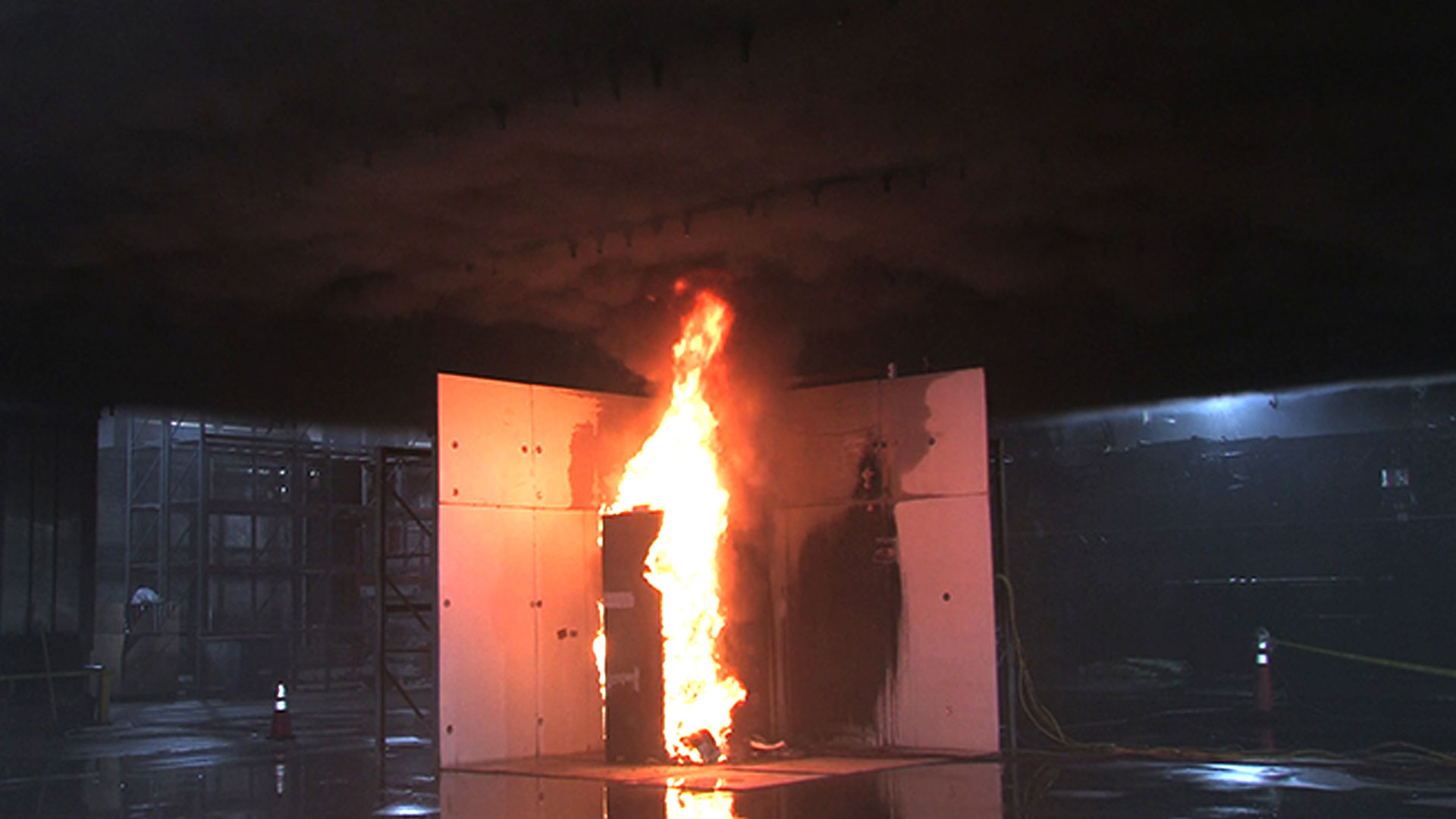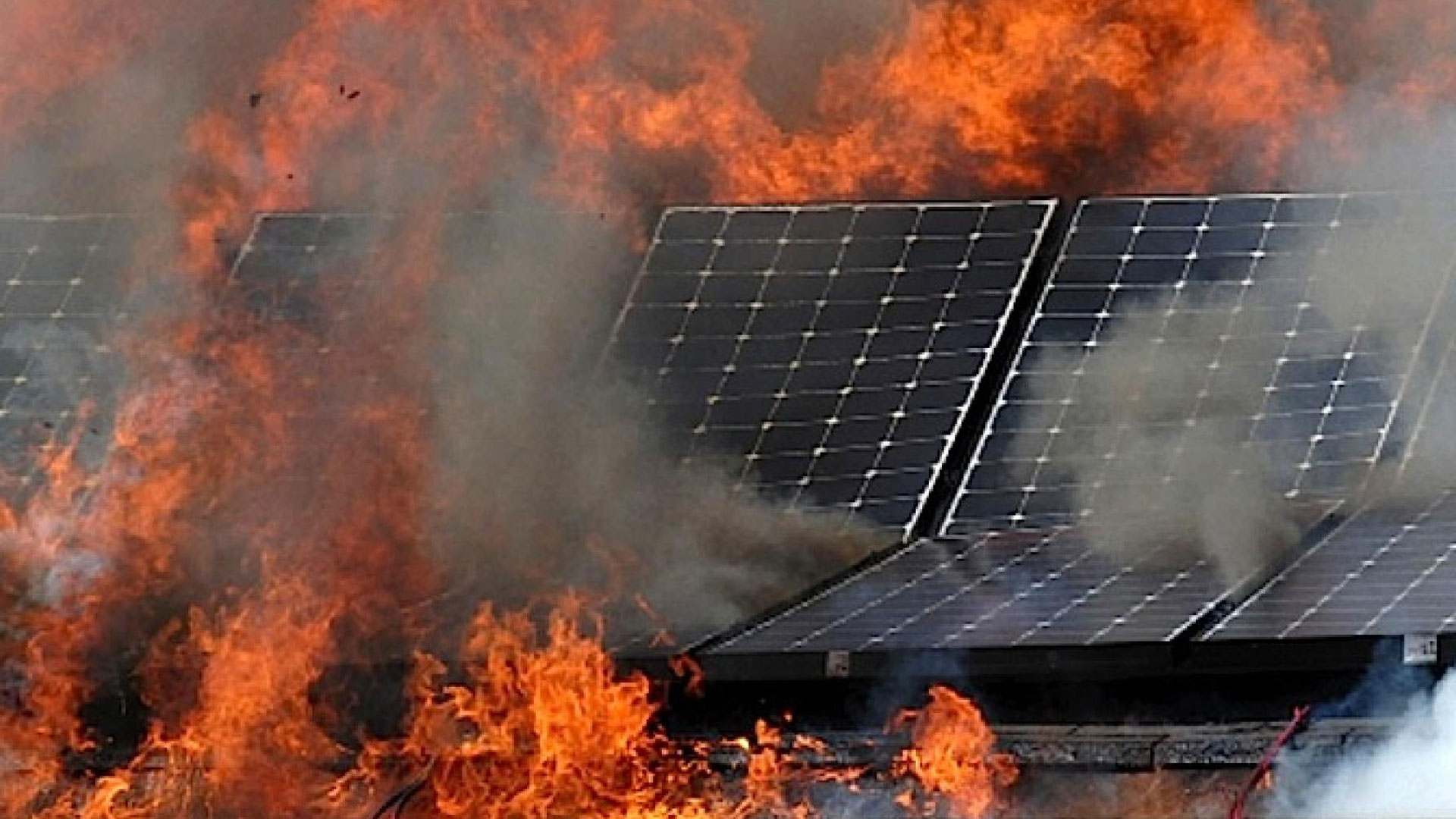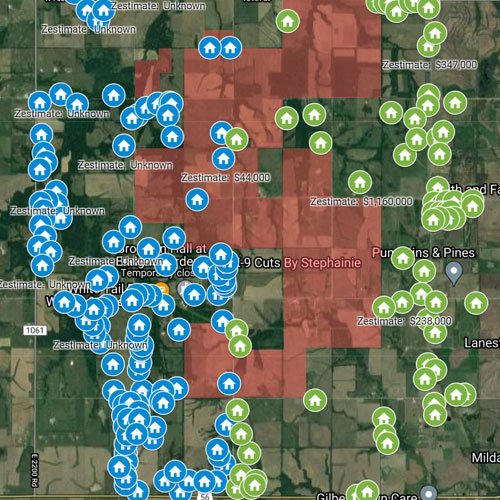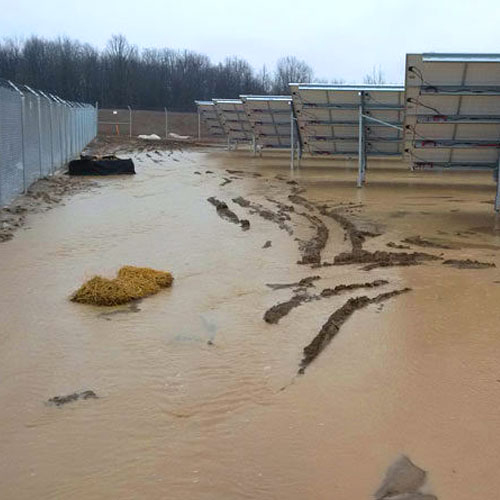Citizens Have Big Concerns
Health & Safety When it Comes to Utility-Scale Solar
What do we all REALLY KNOW? Don’t RUSH the Critical Thinking, Serious Debate and Decisons that will irreversibly impact our Counties, State, Nation and World …
Fire Risks and Emergency Response Preparedness
We are already beginning to witness globally Utility-Scale Solar Facility and Battery Energy Storage System Facility (BESS) fire hazards. What County Fire and Emergency Response Services are in currently in place that can handle mitigating Industrial Utility-Scale Solar Facility emergencies close to humans? Developments should never be put ahead of public health and safety.
1) Lithium-ion Battery Storage Facility Fires
A fire at a lithium battery storage facility in Morris, Illinois required evacuation of residents and specialized techniques to extinguish. Hotspots from the fire continued for days. The link below is to an Environment Protection Agency (EPA) website EPA website providing reporting on activities following a June 29, 2021 fire at a lithium battery storage facility in Morris Illinois. While this battery storage fire was not associated with a utility scale solar installation, utility scale solar Battery Energy Storage System, or BESS, use a large volume of very large lithium batteries. The EPA monitored for hydrogen sulfide, carbon monoxide, hydrogen fluoride and smoke particulates. Citizens were evacuated; the evacuation order was lifted on July 3rd.
Because of dangers with treating lithium fires with water, the local firefighters applied a dry chemical agent, Purple K,, to the fire. Purple K mitigates the toxic effects of the fire; however, this was unsuccessful. Ultimately, the fire was largely extinguished by covering the 30 foot by 40 foot area with Portland cement.
OF NOTE: NextEra’s West Gardner utility-scale solar facility would have 128MW of BESS. Per DNV, a company in the energy storage business, 10MW of BESS requires a container 53 feet long, by 9 feet wide by 10 feet tall. Extrapolating those dimensions to support 128MW would require approximately 13 such containers and represent a footprint 5 times larger than the Morris, Illinois battery storage area.
Key considerations:
- Does a BESS storage facility make sense near residences?
- Do our county local firefighters have the man power, equipment and materials to fight a fire at BESS facility? If not, will they and who pays for it?
- Will local firefighters have ease of access to quickly fight a fire?
- Are all county Emergency Responders trained and prepared to respond quickly and assist communities if a BESS fire or explosion were to happen?
- Will there be evacuation plans?
- Who will pay the costs to those harmed by costs of evacuation, lost time at work, or worse – residents or firefighters exposed to killed by toxic smoke and fire?
- Where can the public find the details for fire and emergency response to utility-scale solar and BESS storage facility fires?
2) FEMA Grant for Research on Hazards Due to Battery Energy Storage System (BESS) Fires
In October 2020, FEMA provided a grant to the University of Texas at Austin to study “The Emerging Hazards of Battery Energy Storage Systems.” The study is apparently still underway as the results have not been published.
3) Just How Concerned Should We Be About Battery Fires?
This Solar Power World article provides additional information, causes for battery fires and construction techniques for mitigating risk.
“The whole goal of destructive testing is to determine if something goes into thermal runaway, what happens?” Carey said. “Yes, there may be some batteries that are more resistant to thermal runaway, but we have found across the board that they release the same chemicals with the same level of toxicity and potential flammability.”
4) Burning Concern: Energy Storage Industry Battles Battery Fires
This S&P Global Market Intelligence article covers a fire at a 4MW BESS in Arizona and mentions fires as having occurred in South Korea, Europe and Australia.
“There is a surge happening and we have to be prepared”
…said Christian Dubay, a vice president and chief engineer at the NFPA. In addition to developing codes and standards, the non-profit organization has created training programs to help first responders react appropriately to fires involving lithium-ion batteries, which can expose people to burns, electrical shocks and toxic substances.

5) Bird + Utility-Scale Solar Facility Starts Fire that Scorches Over 1,200 Acres and Kills 84% of Facility’s Generating Capacity
According to a California Fire Battalion Chief, the birds wings touch multiple electrical conductors at the same time and they turn into a “light bulb”. He also said, “It happens all the time.”
People wonder how safe homes that are located close to solar farms are, when a fire can consume 1,127 acres of land before it can be put out.
The “National Fire Data Center” keeps statistics on causes of fires however, fires resulting from Solar Panels are NOT DOCUMENTED. Instead, those fires are classified as “other.”

Use of Toxic Herbicides and Pesticides
Herbicide and pesticide damage on nontarget plants can cause slight to serious injury symptoms and can cause economic damage as well.
Utility-Scale Solar Facilities routinely use chemicals to control vegetation growth under and around the millions of solar panels that make up facilities. What studies and documentation do the Counties have to ensure injury to the public and economic damage to farming and agri-businesses will not occur?
1) Herbicide Dangers
Herbicide Usage is a public health concern with utility-scale solar. Solar array structures impede the ability to mow vegetation resulting on a reliance on a number of herbicides to control vegetation. As proposed in Johnson and Douglas counties, utility scale solar would be located on land currently used for agriculture. Land currently in use for livestock currently receives minimal herbicides. Cropland is treated with herbicides that have been tested for growing crops for human and animal consumption.
Herbicides used for utility scale solar include growth retardants to slow growth of vegetation and brush killer to kill unwanted woody plants. The large scale use of such herbicides around residences when setbacks from property lines are minimal poses a potential health hazard due to drift of sprays, runoff and vaporization that may occur most likely in morning and late evening hours.
The following is an excerpt from an article titled “Herbicide Spray Drift” by Alan Dexter, an agriculture specialist at North Dakota State University and the University of Minnesota.
“Vapor drift occurs when a volatile herbicide changes from solid or liquid into a gaseous state and moves from the target area. Herbicide vapor may drift farther and over a longer time than spray droplets. However, spray droplets can move over two miles under certain environmental conditions so crop injury a long distance from the intended target is not necessarily due to vapor drift. A wind blowing away from a susceptible crop during application will prevent damage from droplet drift, but a later wind shift could move damaging vapors from the treated field into the susceptible crop. An experiment con ducted in Canada demonstrated that 3 to 4 percent of both 2,4-D amine and high volatile ester drifted out of the target area as spray droplets. However an additional 25 to 30 per cent of the ester drifted as vapor in the first 30 minutes after spraying while no additional movement of the amine was detected.
Relative humidity and temperature. Low relative humidity and/or high temperature will cause more rapid evaporation of spray droplets between the spray nozzle and the target than will high relative humidity and/or low temperature. Evaporation reduces droplet size, which in turn increases the potential drift of spray droplets. For example, very fine particles can drift 367 yards to a few miles with only a 3 mile per hour wind (refer to Table 1).”
2) Pesticide Dangers
The following paper is titled “Pesticides, Noxious Weed Control, and Chemical Drift Protection in Kansas” It is authored by Zack Pistora for the Kansas Rural Center. One of the recommendations is for defining pesticide drift and developing protections for those impacted by it. In the author’s view, current regulations do not sufficiently cover risks associated with pesticide nor protections for those impacted by pesticide drift.
Our county citizens are justifiably concerned that they and their families could be in harm’s way even though a utility-scale operator could be in compliance with state regulations in their chemical application treatments.
Page 10 of the report provides a listing of common pesticides used in Kansas. Note that almost all are possible carcinogens, have neurological concerns, or other potentially significant adverse effects.
3) Herbicides Used in Utility-Scale Solar and Safety Data Sheets
Below are several links to Bayer Corporation documentation for vegetation managment products used in utility-scale solar. Their brochure covering 5 products for several common scenarios associated with utility-scale solar facilities. And the Safety Data Sheets associated with those 5 products.
NOTE: Esplanade 200 SC is effective for 8 months.
4) Toxic Materials in Solar Panels
Solar Panel Construction
Citizens for responsible solar are concerned with living near hundreds of thousands of solar panels manufactured with toxic materials. Increasing setbacks would provide some amount of protection from the release of toxic material into the environment which might occur due to storm damage or solar panel breakdown over time.
Cadmium
Used in many solar panels and is known to be highly toxic and carcinogenic. Exposure to cadmium can cause lung, kidney and liver damage or failure. Cadmium in solar panels is often combined with tellurium which forms a more stable compound than cadmium alone. Solar industry participants downplay the risk associated with cadmium saying that it is enclosed by a thin film and stable when combined with tellurium.
Per the EPA, some solar panels are hazardous waste due to leachability of toxic material. The EPA leaves it to the operator to determine if solar panels are hazardous though they assert that any solar panels that fail toxicity testing must be managed as hazardous waste. Citizens are concerned about leaving the responsibility for toxicity determination to the operator as the operator is financially incented to consider solar panels as non-hazardous waste due to increase costs of handling hazardous waste. If solar panels containing toxic materials are damaged, how will hazardous materials leach into the ground and be in runoff or find it’s way into residential well water?
Perovskite
Perovskite solar cells have recently drawn significant attention for photovoltaic applications with a certified power conversion efficiency of more than 22%. Unfortunately, the toxicity of the dissolvable lead content in these materials presents a critical concern for future commercial development.
Once soil or water is polluted, lead and its compounds can result in long-term environmental damage and serious harm to human health on account of the high toxicity of lead, combined with a long degradation lifetime and stability in the ecosystem.
Other Citizens’ Utility-Scale Solar Concern Topics
Problems with Utility-Scale Solar Power Facilities
This section contains discussion around the “problems” with renewable energy technologies. What happens when Utility-Scale Solar ends up hurting humans, wildlife and the planet as a whole? Understanding the many complexities of Utility-Scale Solar is critical before decisions are made.

County and City Government Impacts
This section contains concerns over tax abatements for Industrial Utility-Scale Solar Developments, unreliable dispatchable electricity (energy insecurity), increased electrical rates, county staffing and administration challenges, negative impact on long-term economic growth of counties.

Property Valuation Impacts on Surrounding Properties
This section contains comments on Utility-Scale Solar and what has been observed and studied with regards to negative impacts to surrounding property values. Content was curated from Appraisal experts, property value research studies (not many out there since large scale industrial solar power facilities near human populations/homes, within less than 1 mile, is a new concern).

Stormwater and Erosion Control
Increased stormwater runoff from utility scale solar facilities during
both the construction phase and ongoing operations is a serious issue. During construction the land is scraped of vegetation and bare ground is exposed to rain and wind. Stormwater runoff will result in costly erosion, flooding and sediment buildup causing harm to connecting tributaries, eco-systems and landowners.

Videos
This section contains a collection of videos, spanning all topics. If you don’t like to read articles these videos are helpful in explaining many of the concerns outlined above. Additionally you will find comments from both Douglas and Johnson County, KS Concerned Citizens and past County Planning Commission Public Meetings.

